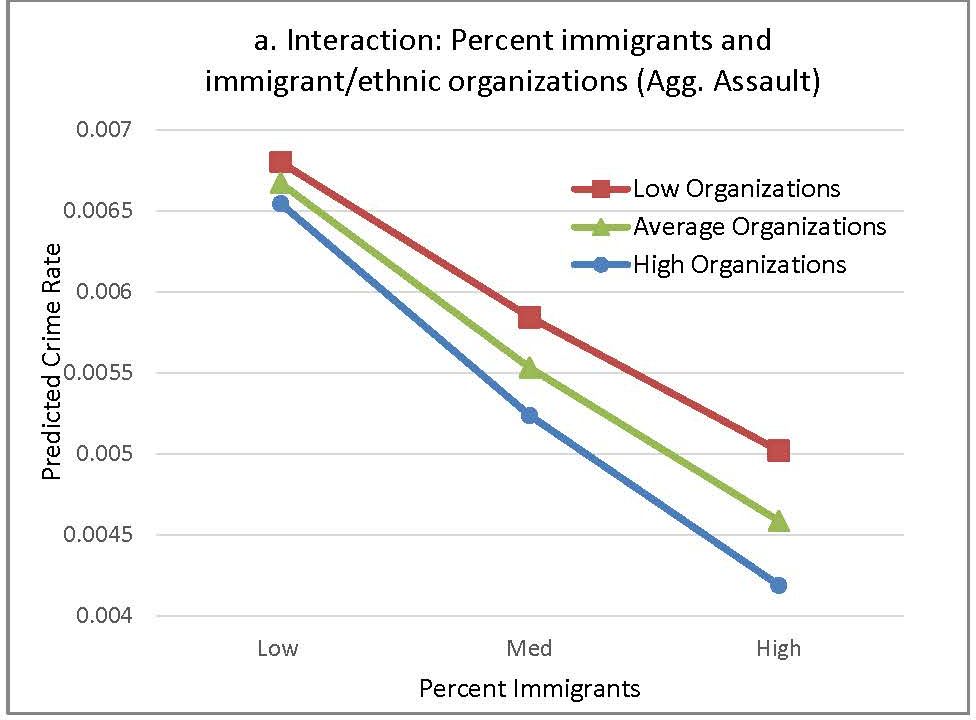Criminologists have consistently found that neighborhoods with more immigrants do not have more crime, but in fact often have less crime. Criminologists have proposed that voluntary organizations can help neighborhoods deal with problems that can result in more crime. One possibility for why some immigrant neighborhoods have lower crime rates is that they have voluntary organizations that help organize the community. We test this possibility with longitudinal data in the Los Angeles metropolitan area, and find evidence that such organizations do indeed seem to be beneficial for some neighborhoods over time.
You can access the article by lab alumnus Young-An Kim, Dr. John R. Hipp, and Dr. Charis E. Kubrin in the journal Crime & Delinquency entitled, “Immigrant Organizations and Neighborhood Crime”.
Abstract: “We examine the impact of immigrant-serving organizations on neighborhood crime in the Los Angeles Metropolitan area, while accounting for other community correlates of crime as well as potential endogeneity. We estimate longitudinal negative binomial regression models that test for the main, mediating, and moderating effects of immigrant-serving organizations. We found that immigrant-serving organizations generally have crime-reducing effects for all types of crime. We also find that high immigrant concentration is associated with lower levels of crime in general, and this effect is moderated by the number of organizations, which underlines the importance of accounting for these organizations when studying the nexus of immigrant concentration and neighborhood crime.”
Below is a graph showing that neighborhoods with more immigrants have lower aggravated assault rates over time, and this crime is reduced even more if there are more immigrant voluntary organizations in the neighborhood.
